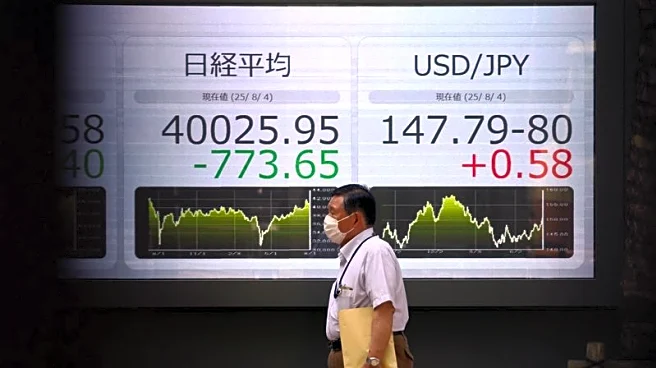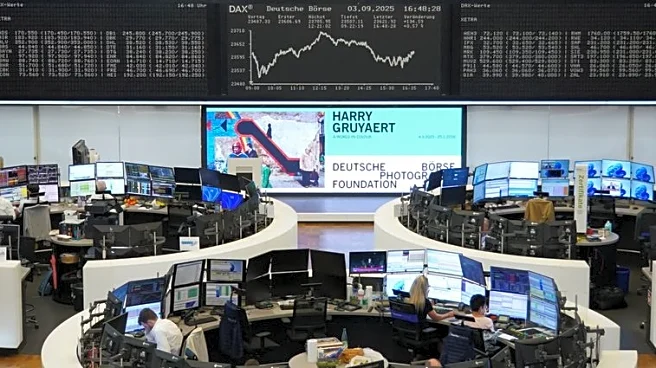What's Happening?
The commodities market is experiencing significant fluctuations as OPEC+ plans to increase oil output by approximately 137,000 barrels per day. This decision comes amid geopolitical tensions and supply disruptions, including Ukrainian strikes on Russian oil hubs and a looming U.S. government shutdown. Oil prices, specifically Brent and WTI, fell by 1-2% due to oversupply concerns, despite a recent draw in U.S. inventories. Meanwhile, gold prices have surged to record highs, driven by expectations of Federal Reserve rate cuts and global uncertainty. Precious metals like silver and platinum have also seen significant gains. In contrast, U.S. grain futures are mixed, with corn and soybean prices under pressure due to favorable harvest conditions and competition from South American exports.
Why It's Important?
The planned output hike by OPEC+ could have broad implications for global oil prices and energy markets. Increased supply may lead to lower prices, affecting energy companies and economies reliant on oil exports. The surge in gold and other precious metals indicates investor caution and a shift towards safe-haven assets amid economic uncertainty. This trend could impact financial markets and investment strategies. Additionally, the pressure on U.S. grain and soybean prices highlights the competitive challenges faced by American farmers, particularly as China turns to South American suppliers. These developments underscore the interconnectedness of global markets and the potential for geopolitical events to influence economic conditions.
What's Next?
Market participants are closely watching upcoming events, including the October OPEC+ meeting and USDA reports, which could further influence commodity prices. Analysts are also monitoring potential rate cuts by the Federal Reserve, which could affect precious metals and broader market sentiment. The geopolitical landscape, including U.S.-China trade relations and domestic political developments, remains a critical factor in shaping future market dynamics. Stakeholders in the energy, agriculture, and financial sectors will need to navigate these uncertainties and adjust their strategies accordingly.
Beyond the Headlines
The volatility in commodities markets reflects deeper economic and geopolitical shifts. The reliance on safe-haven assets like gold suggests a lack of confidence in traditional financial instruments amid global instability. The competitive pressures on U.S. agriculture highlight the challenges of maintaining market share in a globalized economy. These trends may prompt discussions on energy independence, trade policies, and investment strategies, as stakeholders seek to mitigate risks and capitalize on emerging opportunities.











